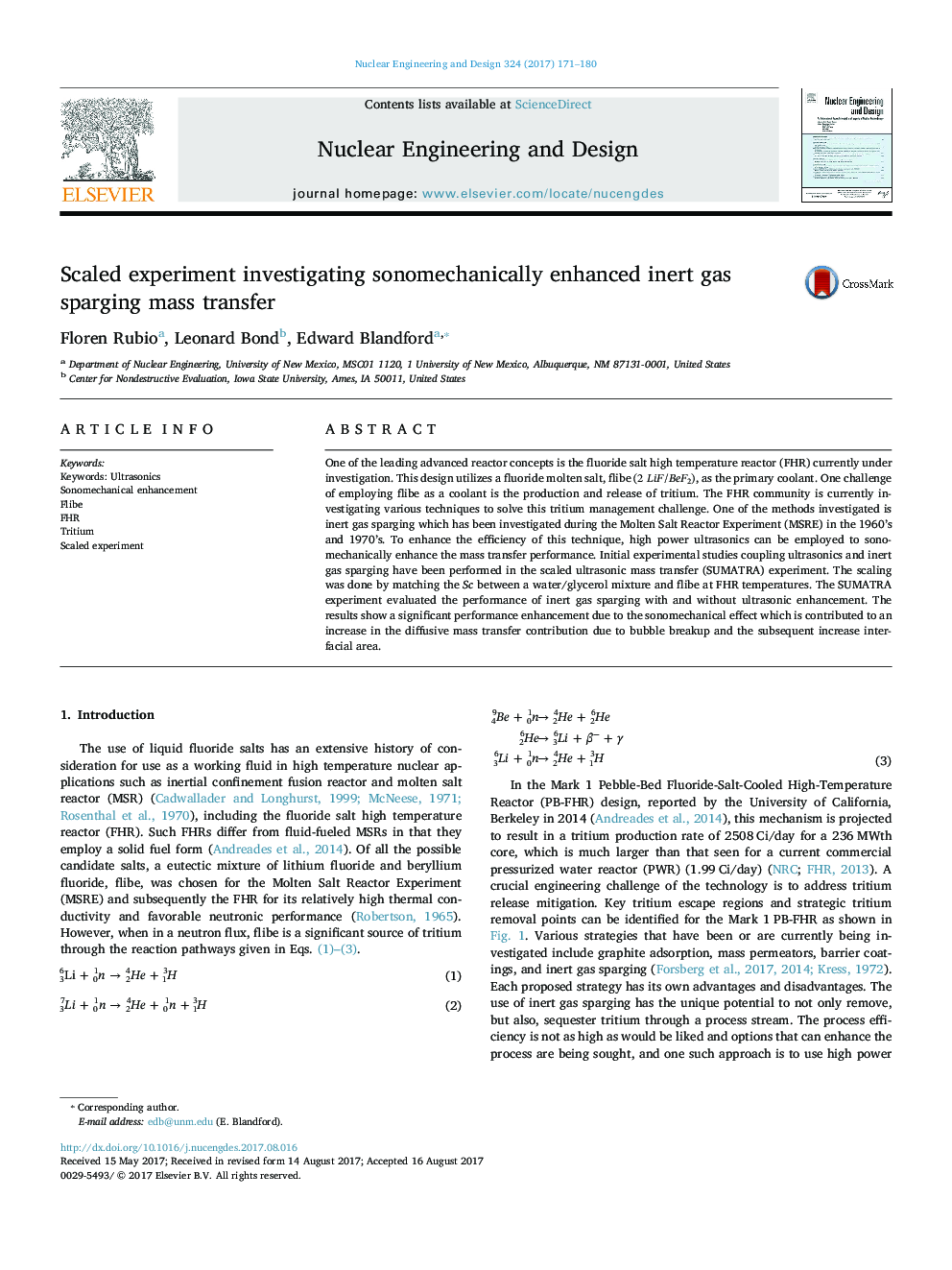| Article ID | Journal | Published Year | Pages | File Type |
|---|---|---|---|---|
| 4925386 | Nuclear Engineering and Design | 2017 | 10 Pages |
Abstract
One of the leading advanced reactor concepts is the fluoride salt high temperature reactor (FHR) currently under investigation. This design utilizes a fluoride molten salt, flibe (2LiF/BeF2), as the primary coolant. One challenge of employing flibe as a coolant is the production and release of tritium. The FHR community is currently investigating various techniques to solve this tritium management challenge. One of the methods investigated is inert gas sparging which has been investigated during the Molten Salt Reactor Experiment (MSRE) in the 1960's and 1970's. To enhance the efficiency of this technique, high power ultrasonics can be employed to sonomechanically enhance the mass transfer performance. Initial experimental studies coupling ultrasonics and inert gas sparging have been performed in the scaled ultrasonic mass transfer (SUMATRA) experiment. The scaling was done by matching the Sc between a water/glycerol mixture and flibe at FHR temperatures. The SUMATRA experiment evaluated the performance of inert gas sparging with and without ultrasonic enhancement. The results show a significant performance enhancement due to the sonomechanical effect which is contributed to an increase in the diffusive mass transfer contribution due to bubble breakup and the subsequent increase interfacial area.
Keywords
Related Topics
Physical Sciences and Engineering
Energy
Energy Engineering and Power Technology
Authors
Floren Rubio, Leonard Bond, Edward Blandford,
